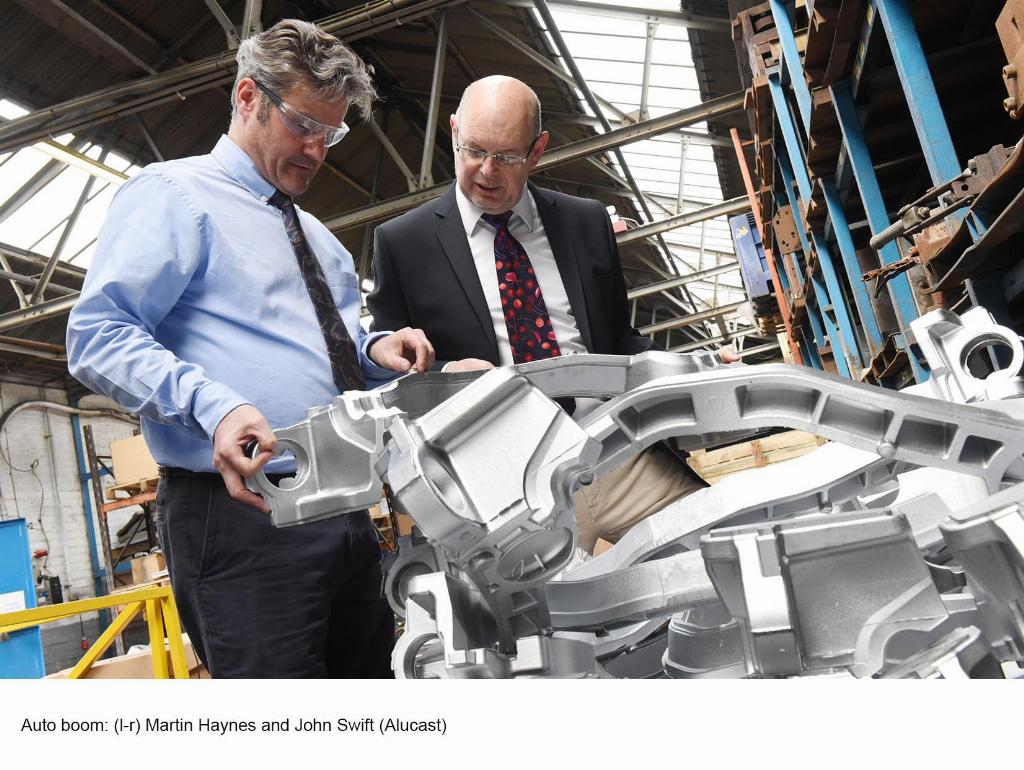How manufacturers can grow enterprise value post-pandemic

Jeremy Bowley, managing director of Insider Pro, explains how UK manufacturers can create enterprise value and why this is so important post-COVID-19.
Growing sales, expanding margins, building resilience, and doing all this with the most efficient use of scarce capital possible, are the perennial objectives of businesses everywhere that wish to grow their enterprise value.
For British manufacturing, the pandemic and Brexit together represent a shock of unprecedented proportions that have transformed these long-term objectives into priorities that need to be tackled today.
I’ve begun to run out of superlatives to describe the scale of the upheaval we have all experienced in the last year. Manufacturing has certainly fared better than some parts of the economy like high street retail and hospitality, but even so sales are down around 10% across a broad spread of manufacturing sectors, while profits have approximately halved as fixed costs have exerted their powerful influence on margins in a world of lower demand.
The catastrophe of 2020 came after five years during which businesses enjoyed substantial revenue growth. Insider Pro’s analysis of the accounts of 1,457 UK manufacturers employing 2.7 million makers shows that sales rose more than a fifth between 2015 and 2020, driven by a combination of higher volumes and gently rising prices.
Even so, £38 billion of additional revenues made between 2015 and the beginning of the pandemic did not translate into higher profits. Companies, especially smaller manufacturers, endured a steady margin squeeze that left them less resilient when COVID-19 struck. Higher revenues alone are not enough to build enterprise value in a business.
Entrepreneurs are not defeatist by nature. As we pick ourselves up and dust ourselves off, we can see that the pandemic and Brexit have had a couple of salutary side effects. First these twin shocks have clearly exposed some structural weaknesses in how manufacturers manage their supply chains and that makes it easier to address what otherwise might just go in the ‘we’ve always done it this way’ box. For example, we have seen how shipping costs can spiral unexpectedly and the availability of product can disappear altogether – supply chains can simply break. A cheap listing price for a component or raw material is irrelevant if getting it to your factory gets pricier or if you simply can’t get it there at all.
Secondly, the dislocation has provided an opportunity to step back from the day-to-day operation, take stock and consider changes that could really transform a business. Even in normal times, most businesses have unnecessary costs, but in this post-COVID world the opportunity is considerable - for example reducing occupancy costs with fewer people working on-site, especially in office-based jobs. In our experience finance directors underestimate by half the efficiencies they can extract. That’s a big lever to pull in terms of increasing your enterprise value and is especially important in limiting the amount of cash burnt each month.
In any recovery, even long-established businesses need to start thinking like growth companies as they come off the back off a ‘low volumes’ year. The biggest obstacle for growth of any sort is cash, so companies must always prioritise cash generation over profit. Scaling up always means stress-testing your supply chain, rather than simply expecting it to grow with you. If your suppliers don’t have capacity, don’t blame them if they can’t keep up. In other words, you have to have an eye on your suppliers’ businesses as well as your own. Minor problems can quickly balloon as you get bigger.
At Insider Pro we help businesses embed a cash-first culture from top floor to shop floor. Even something as simple as weekly cash reporting alongside production monitoring can change mindsets to bring cash into focus.

Disruption, anxiety about supplies or fulfilment, and lack of visibility about demand for your products make it tempting to buffer your business with loads of inventory. But this sucks up much needed cash that you could deploy for productive growth. One part of the answer is better forecasting. The other, crucially, is sourcing your supplies closer to home.
For example, although lower pricing from China is attractive, if you are growing your sales rapidly, such a long supply chain makes the business less resilient and will tie up mountains of working capital. There are the environmental considerations of long-distance transport too – if you want to attract the growing legion of ESG-focused investors this is now a necessary consideration (and the more investors you can appeal to, the more chances you have of getting a premium valuation).
So rather than only aiming for the lowest unit price for a component, the real win may come from sourcing products closer to home and the payoff is more rapid sales growth with less environmental impact and a lower cash-funding requirement. It might cost a little bit more, but a simpler, shorter supply chain will help you maximise product availability and that means you can take market share from less agile competitors. Show the value of being close to your customer if your competitors are on the other side of the world. That’s a valuable barrier to entry against newcomers.
Now is the time to rebuild. I am really optimistic about the next 18 months. Household spending is going to explode as lockdown releases, driving demand all the way back up the supply chain. Businesses too have built liquidity, raising equity or taking out new loans to see them through the crisis. Investment has just got a lot more attractive thanks to the chancellor’s super-deduction, so I expect demand for capital goods and machinery to take off too. Don’t miss out on that boom.
Enterprise value comes from both your EBITDA and the multiple a buyer is prepared to pay. Higher EBITDA comes from a combination of more sales and lower costs. A higher multiple comes from showing your business is resilient to risk, has barriers to entry and can execute consistently.
Building enterprise value depends on fine-tuning all the dials on your metaphorical dashboard. Doing this right doesn’t just add incremental value but is truly transformative.
We have all had a chance to reassess our lives and our businesses in the last year. There are big opportunities to make changes now that will really matter for the long term.
Insider Pro www.insiderpro.co.uk














